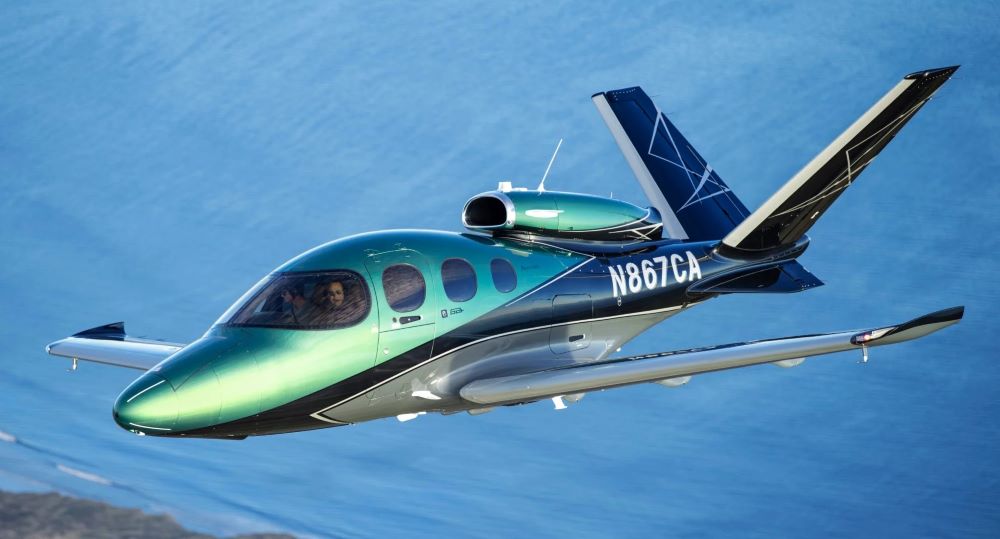Gulfstream IV Review: The 1985 Private Jet That Still Turns Heads
7 min read

Some aircraft make a big splash when they’re launched, only to fade quietly into history. The Gulfstream IV is not one of them. Introduced in 1985, it was built to outclass its rivals in speed, range, and comfort, and for decades, it has done exactly that.
In this review, we’ll take a closer look at what made the GIV such a standout in its day, how it stacks up against modern jets, and why it still holds a place in the skies for those who value proven performance over the latest trend. Whether you’re eyeing one for ownership or simply curious about this business aviation classic, the GIV’s story is worth knowing.
History and Development

Back in the early 1980s, Gulfstream was already a big name in the business jet world. The Gulfstream III had been a hit, but the company knew it needed something with more space, better performance, and updated technology to keep the competition at bay. By early 1983, design work for what would become the Gulfstream IV was underway. Two years later, on September 19, 1985, the GIV took to the skies for the first time. FAA certification followed in April 1987, and deliveries to customers began that same year.
The GIV was more than just a stretched version of its predecessor; it had a longer fuselage, redesigned wing aerodynamics, and significant performance upgrades. Over time, it would spawn several variants, including the GIV-SP introduced in 1992 (later renamed the G400), as well as the G300, G350, G450, and G500. Each model is built on the GIV’s solid foundation.
Production of the GIV family stretched over three decades, ending in 2018. That’s an impressive run by any standard, and with over 900 units produced across all variants, the GIV has left a lasting legacy. Even today, many are still in active service with private owners, charter operators, and even government fleets around the world.
Performance Details
Under the hood, or rather, hanging under the wings, you’ll find two Rolls-Royce Tay Mk 610-8 turbofans. Each delivers about 13,850 pounds of thrust, giving the GIV the muscle to handle long-haul flights without breaking a sweat. Cruise speed typically falls between 459 and 476 knots (about 850–882 km/h), but if you’re in a hurry, it can push to a maximum of Mach 0.88.
Range figures vary slightly depending on load and conditions, but you’re generally looking at around 4,200 nautical miles with lighter payloads. Some operators report slightly less, around 3,800 nm, while others squeeze out every bit of the 4,220 nm capability. The service ceiling is 45,000 feet, high enough to keep you well above most commercial air traffic.
As for airport performance, the GIV needs roughly 5,450–5,650 feet of runway for takeoff, and between 2,650 and 2,990 feet for landing. Its rate of climb sits around 4,200 feet per minute, which means it gets to altitude quickly; always a plus when you’re chasing smoother air.
Cabin
One of the Gulfstream IV’s biggest draws is its cabin. At over 45 feet long and offering about 1,658 cubic feet of volume, it’s spacious without feeling cavernous. Standard layouts typically seat around 14 passengers, plus two crew, but Gulfstream’s customization options mean you’ll find GIVs configured for as few as 12 or as many as 19 passengers.

The cabin is usually divided into multiple zones, allowing for separate spaces for work, dining, or relaxation. A fully equipped galley and lavatory are standard, and the baggage compartment, about 169 cubic feet, is accessible during flight, so you can grab what you need without digging through luggage after landing.
Over the years, many GIVs have been refurbished with modern materials, lighting, and connectivity, so the age of the airframe doesn’t necessarily mean the interior feels dated. In fact, some charter operators have given their GIVs such fresh interiors that passengers would be forgiven for thinking they’re in a much newer jet.
Tech and Avionics
The Gulfstream IV broke new ground as the first business jet to feature a fully all-glass cockpit. Instead of traditional analog gauges, it used six-color CRT displays, a major leap forward at the time. The avionics suite was built around Honeywell’s SPZ-8000 system, complemented by Collins radios, a flight management system, and dual laser inertial reference systems.
Modern upgrades have kept many GIVs current. Most U.S.-registered aircraft now have ADS-B Out, and satellite communications systems are common. While today’s avionics suites are more advanced, the GIV’s cockpit layout remains highly functional and familiar to crews. It was designed with pilots in mind, and even decades later, it still delivers a solid flying experience.
Operating Costs
Here’s where reality sets in. Running a Gulfstream IV isn’t cheap. Direct operating costs typically range from about $4,400 to $5,400 per flight hour. Annual budgets can run from $1.7 million to $2.8 million, depending on how much you fly.
For perspective, Liberty Jet’s estimates put a 200-hour annual schedule at roughly $1.69 million, and doubling that flight time to 400 hours brings the budget closer to $2.81 million. Those figures include everything from fuel, maintenance, and crew salaries to hangar fees, insurance, and management.
When stacked against the Dassault Falcon 900, the GIV’s costs are higher. The Falcon’s hourly costs hover around $6,600, while the GIV sits closer to $7,900 per hour. Charter rates for the GIV typically range from $7,500 to $9,000 per hour, so unless you’re flying often, chartering might make more sense than owning.
And, being an older model, the GIV’s fuel efficiency lags behind newer designs. Maintenance can also be more frequent as components age, though Gulfstream’s global support network is a big plus for keeping these jets in the air.
Competition
When the Gulfstream IV entered the market, it walked straight into a heavyweight fight. Its closest rivals were the Dassault Falcon 900 and the Bombardier Challenger series, both of which had loyal followings and distinct advantages of their own.
Against the Challenger 604, the GIV easily takes the win on interior space and speed. The cabin is noticeably larger, offering more flexibility for layouts and passenger comfort, while its higher cruise speeds make long trips shorter. That said, the Challenger fights back with lower fuel burn and operating expenses, making it an attractive choice for buyers prioritizing efficiency over outright performance.

The Falcon 900, on the other hand, is more of a thinking pilot’s jet. It can’t quite match the GIV’s range or interior volume, but its tri-jet configuration and impressive aerodynamics give it superior short-field performance, particularly at hot-and-high airports where density altitude can be a challenge. This makes it a favorite for operators who frequently fly into more demanding airstrips, while the GIV remains better suited for missions that are all about long, fast, and smooth legs between major hubs.
Ultimately, the choice between these aircraft often comes down to mission profile and owner priorities. If your flights are typically coast-to-coast or intercontinental, and you want maximum comfort paired with strong cruise speeds, the Gulfstream IV is hard to beat. But if your routes include smaller, high-altitude airports or you want lower operating costs, the Falcon 900 or Challenger 604 may be the better strategic choice.
Pros
The Gulfstream IV’s list of strengths starts with its pioneering technology. Being the first to bring an all-glass cockpit to the business jet world was a huge step forward, and its avionics were top-of-the-line at the time. Even now, with upgrades, the cockpit is more than capable for modern flying.
Performance is another highlight. The combination of long range and fast cruise speeds means fewer fuel stops and quicker trips, making it a genuine intercontinental workhorse. The cabin, too, is a big win; spacious, customizable, and designed for comfort over long flights. Then there’s reliability. The GIV was built to last, and many examples are still flying strong decades later. It also served as the foundation for several later Gulfstream models, cementing its place as one of the brand’s most important designs.
Cons
The flip side of that reliability is cost. Operating a GIV is more expensive than running many newer jets of similar size. The older Rolls-Royce Tay engines are solid performers but can’t match the fuel efficiency of modern powerplants. Depreciation is another factor; while you can pick up a GIV for a fraction of its original price, resale value isn’t as strong as newer Gulfstreams or certain competitors. For buyers, this can be an advantage going in, but it also means you may not recoup much if you sell.
Final Verdict
The Gulfstream IV is a classic in the truest sense. A jet that broke new ground, served for decades, and still delivers a premium travel experience. Its pioneering avionics, long range, and roomy cabin made it a favorite among executives, governments, and high-profile individuals. Even today, a well-maintained GIV offers a lot of capability, though it’s best suited to buyers who value performance and space over cutting-edge efficiency.
If you want the very latest tech and the lowest possible operating costs, a newer Gulfstream or a competitor like the Falcon 900 might be a better fit. But if you’re looking for a proven platform with pedigree, presence, and the ability to cross oceans in comfort, the Gulfstream IV still makes a strong case for itself.







